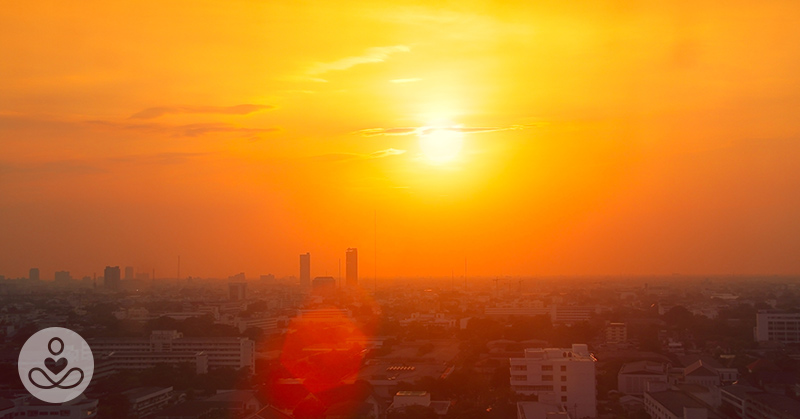Tom Matthews, a lecturer in Climate Sciences at Loughborough University, focuses his research on the dangers of extreme weather and tropical cyclones. Despite the alarming findings of his research, the crucial message about the risks of extreme heat is not receiving the attention it deserves.
Matthews has been approached by various media outlets to discuss the UK heatwave and climate change, but the global implications of this heat remain largely unaddressed.
While regions like the UK and France experience temperatures reaching up to 115°F (46°C), countries like India, Pakistan, and Kuwait have faced even more extreme heat, with temperatures soaring as high as 129°F(54°C). Despite some level of acclimatization to extreme temperatures in these areas, prolonged exposure to such intense heat can lead to fatalities and other disasters like droughts and wildfires.
In recent years, measures and systems have been put in place to provide warnings and health alerts during extreme temperature events, following catastrophic heatwaves in Europe and Russia that claimed thousands of lives.
However, regions like South Asia and the Persian Gulf, where extreme heat is a regular occurrence, face greater challenges and higher risks. The human body’s natural cooling system, such as sweating, has its limits when exposed to excessively high temperatures.
The Body’s Thermal Limit
As temperatures rise, the body relies on sweating to regulate its temperature through evaporation. However, when the wet-bulb temperature reaches or exceeds 35°C, the body’s ability to cool down by sweating is compromised. This crucial threshold indicates that the air is too saturated with water vapor for sweat to evaporate effectively. This can lead to a dangerous increase in core body temperature, posing a serious risk of heat-related illnesses and fatalities, particularly for vulnerable populations.
While occurrences of a wet-bulb temperature of 35°C are rare, there are concerns that climate change could push densely populated regions like the Persian Gulf, South Asia, and North China Plain beyond this threshold in the coming decades, putting billions of lives at risk.
To cope with heatwaves, people in regions like the UK resort to strategies like staying hydrated, seeking shade, and using air conditioning. However, the increasing demand for cooling units poses challenges in terms of energy consumption. As energy needs for air conditioning are projected to triple by 2050, there is a pressing need for more energy-efficient cooling technologies to mitigate the environmental impact.
In the event of a power outage, which could be exacerbated by extreme weather events like tropical cyclones, ensuring access to clean drinking water becomes a critical priority to prevent further health complications.
How to Reduce Climate Change
While the impacts of climate change are already being felt, there is still an opportunity to limit its worst effects. NASA proposes a two-fold approach: mitigation, which aims to reduce greenhouse gas emissions, and adaptation, which involves adjusting to the existing climate changes. Addressing climate change requires a global response, including international agreements to promote cleaner energy sources and local initiatives to enhance public transportation and energy efficiency.
Sources
- T. Matthews, R. L. Wilby, and C. Murphy. An emerging tropical cyclone–deadly heat compound hazard. Link
- Herring, S. C., A. Hoell, M. P. Hoerling, J. P. Kossin, C. J. Schreck III, and P. A. Stott, Eds., 2016: Explaining Extreme Events of 2015 from a Climate Perspective. Bull. Amer. Meteor. Soc., 97 (12), S1–S145. Link
- Nikolaos Christidis, Gareth S. Jones, and Peter A. Stott. Dramatically increasing chance of extremely hot summers since the 2003 European heatwave Link, December 8, 2014
- Hanna EG, Tait PW. Limitations to Thermoregulation and Acclimatization Challenge Human Adaptation to Global Warming. Link, July 15, 2015
- Eun-Soon Im, Jeremy S. Pal, and Elfatih A. B. Eltahir. Deadly heat waves projected in the densely populated agricultural regions of South Asia. Link, August 2, 2017
- Air conditioning use emerges as one of the key drivers of global electricity-demand growth Link, May 15, 2018
- Trevor Houser and Peter Marsters. In a Class of its Own Within the US Link, April 12, 2018[8] NASA. Is it too late to prevent climate change? Link






